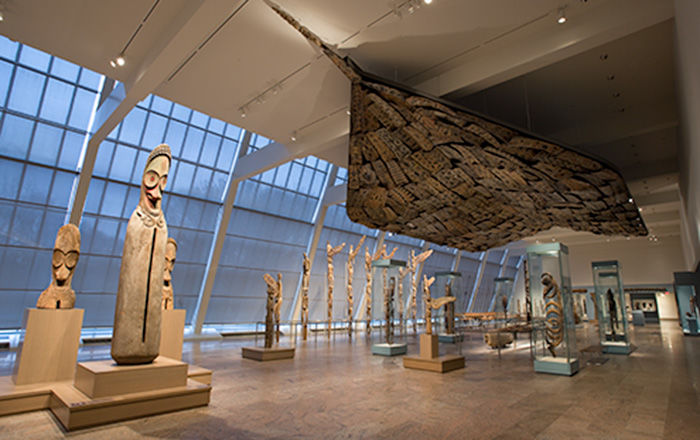Female figure for a komien (trance diviner)
Attributed to a "Master from Essankro"
This contemplative figure (the female of a carved couple with 1978.412.390) with slender torso, flexed legs, and muscular calves embodies an ideal of physical and moral perfection. As the most desirable forms for nature spirits to inhabit, such figures were likely the centerpiece of a diviner’s professional practice. The accenting of her recessed eye sockets with white kaolin echoes its application by the trance diviner to his or her own face to enhance powers of perception and mediation.
When deployed by a komien (trance diviner), the beauty of this elegant pairing dazzled and flattered asye usu (nature spirits). Their public display also impressed human spectators who assembled to witness the diviner’s possession. The aesthetic quality of such instruments attests to their efficacy and to the professional standing of their owner. In order to preserve the refinement of these works, offerings made to fortify them have been concentrated around their circular bases.
These sculptures are attributed a carving workshop of at least three Baule sculptors, led by a master from the N’Zipri lineage, that thrived within the village of Essankro for much of the nineteenth century. Art historian Susan Vogel documented at least one of their works in situ. She proposes that members of this circle were likely of the same generation and drew inspiration and influence from one another. Hallmarks of their style are evident in some twenty figures and four masks, now in private European collections. These elements include elongated torsos, heart-shaped faces, flattened and pursed lips, delicately carved hands, and defined, U-shaped shoulder blades that frame a faint spinal groove.
This image cannot be enlarged, viewed at full screen, or downloaded.
This artwork is meant to be viewed from right to left. Scroll left to view more.






